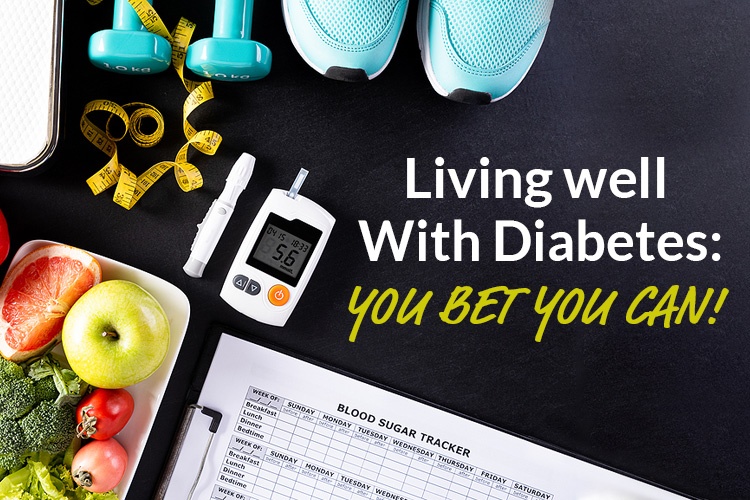For the first times since I started this column eleven years ago, it’s going to be about me. I was diagnosed with Type 2 Diabetes two weeks ago. While people are happy to talk about their experiences with diabetes, I WASN’T comfortable with talking about diabetes. My wife is Type 2, as are several friends of ours. The “other Type” of diabetes was what caused the death of my Best Man a year after my wife and I got married. He was diagnosed with diabetes when he was a kid. It was called Juvenile Diabetes then. Today it’s Type 1. Since then, I haven’t WANTED to talk about diabetes at all. But…for my own education and maybe helping someone else, and not one to shut up for any known reason, I’m reopening my blog rather than starting a new one. I MAY take a pause and write about Breast Cancer or Alzheimer’s as medical headlines dictate; but this time I’m going to drag anyone along who wants to join my HIGHLY RELUCTANT journey toward better understanding of my life with Type 2 Diabetes. You’re Welcome to join me!
I was diagnosed with Type 2 Diabetes six and a half months ago and have been monitoring, working on losing weight, eating right, and taking my Metformin…
According to the World Health Organization, “The expected values for normal fasting blood glucose concentration are between 70 mg/dL and 100 mg/dL. When fasting blood glucose is between 100 to 125 mg/dL, changes in lifestyle and monitoring glycemia are recommended.” The lowest reading I’ve EVER had since this start was on April 14 – and that wasn’t even QUITE normal, it was 138. So, my glucometer data was ALL in the red and I get constant, nasty notes from the thing telling me my “Blood Glucose Levels have been high the last three times!” Honestly? No matter WHAT I did lowered the levels after fasting.
So, I changed my USER settings to 110-182 mg/dL. I didn’t do it to make myself feel PHYSICALLY better: I’d have changed it to 3000-1,000,000 mg/dL, then! I just got tired of getting beat up by my device, and imagining the people who set these limits look like this: https://aanmc.org/wp-content/uploads/2020/06/Dr.Duzzi2017Headshot-scaled-e1594240915188-906x1024.jpg
I needed a realistic goal; a realistic reflection of my experience with room to grow. So, then, what is the Dawn Phenomenon?
“The dawn phenomenon or ‘dawn effect’ is when your blood sugar spikes in the early-morning hours, usually between 3-8am. The dawn phenomenon is very common among those with insulin resistance, and there are some strategies that may help you reduce your fasting blood sugar. What causes are still unclear, though we know that hormones play a large part. These hormones follow a daily cycle, and increase during our waking hours, starting in the early morning.”
So what do I DO about it? The first thing I saw was this: “Working up a sweat in the a.m. is a good idea for anyone experiencing the dawn phenomenon, too—it can help burn up that extra blood glucose.”
GREAT; but I already do that – I bike between 4 and 9 miles every-other-morning and it hasn’t had ANY effect on my blood sugars – they’re the same whether I exercise or not.
Tick. So, as I am writing this on 5/4/23; tonight I will take my blood sugar before bed and then wake up at 2:30am and take them. By the time you read this, you’ll know the result.
What else? No snacks before bed? Uhhhh…I have my phone alarm set at 7 pm; with the intent of not eating anything afterwards. While I sometimes hit that goal, I sometimes miss it, too. I need to both work harder at meeting the goal and also record what I did. The Mayo Clinic Online says I should: “Avoid carbohydrates at bedtime. Change your dose of diabetes medicine or insulin. Switch to a different diabetes medicine. Change the time when you take your medication or insulin from dinnertime to bedtime. Use an insulin pump to give you extra insulin during early-morning hours.”
I’m going to opt for the first one: Avoid carbs at bedtime.
So: no snacks before bed/no carbs before bed (work harder at this); record my blood sugars before bed and in the middle of the night; (continue to) exercise in the morning.
That’s about it! I’ll let you know how it went.
Source: https://www.virtahealth.com/blog/dawn-phenomenon, https://www.mayoclinic.org/diseases-conditions/diabetes/expert-answers/dawn-effect/faq-20057937, https://diabetes.org/diabetes/treatment-care/high-morning-blood-glucose
Image: https://www.hcd.com/wp-content/uploads/2021/01/living-well-with-diabetes.jpg


No comments:
Post a Comment